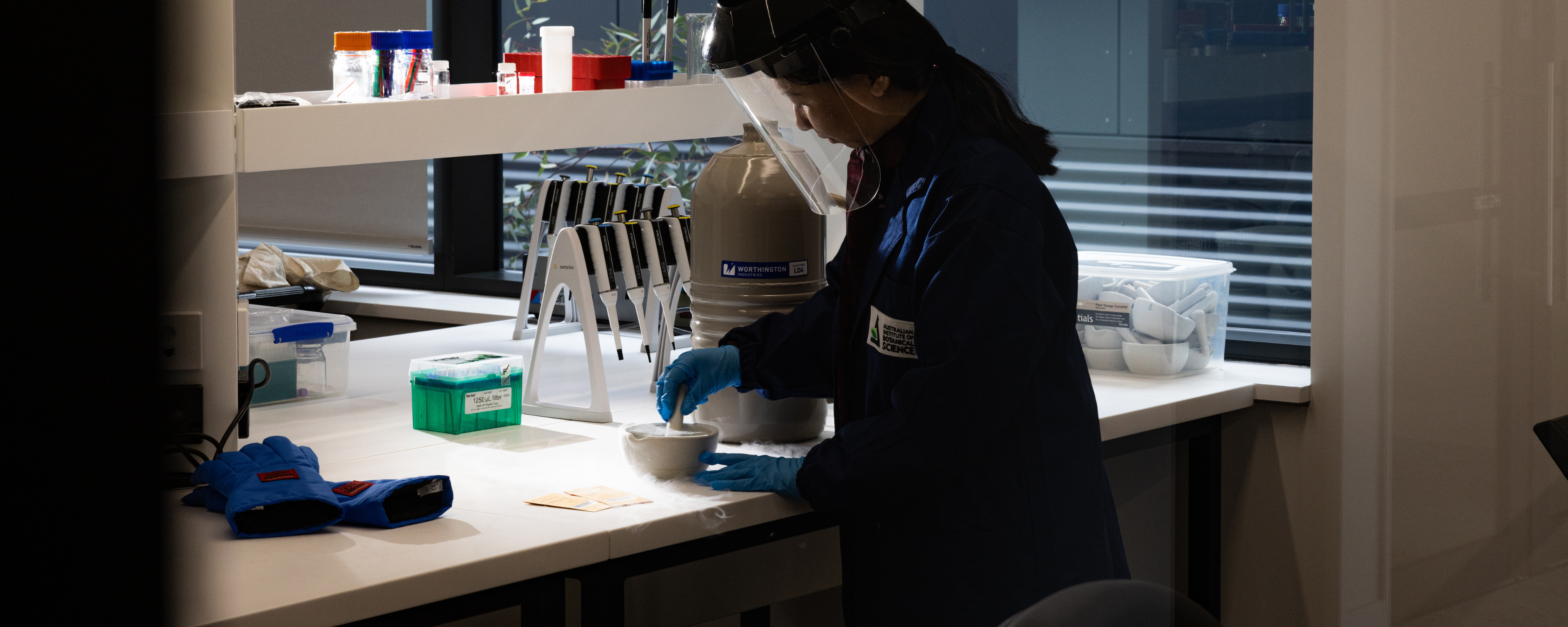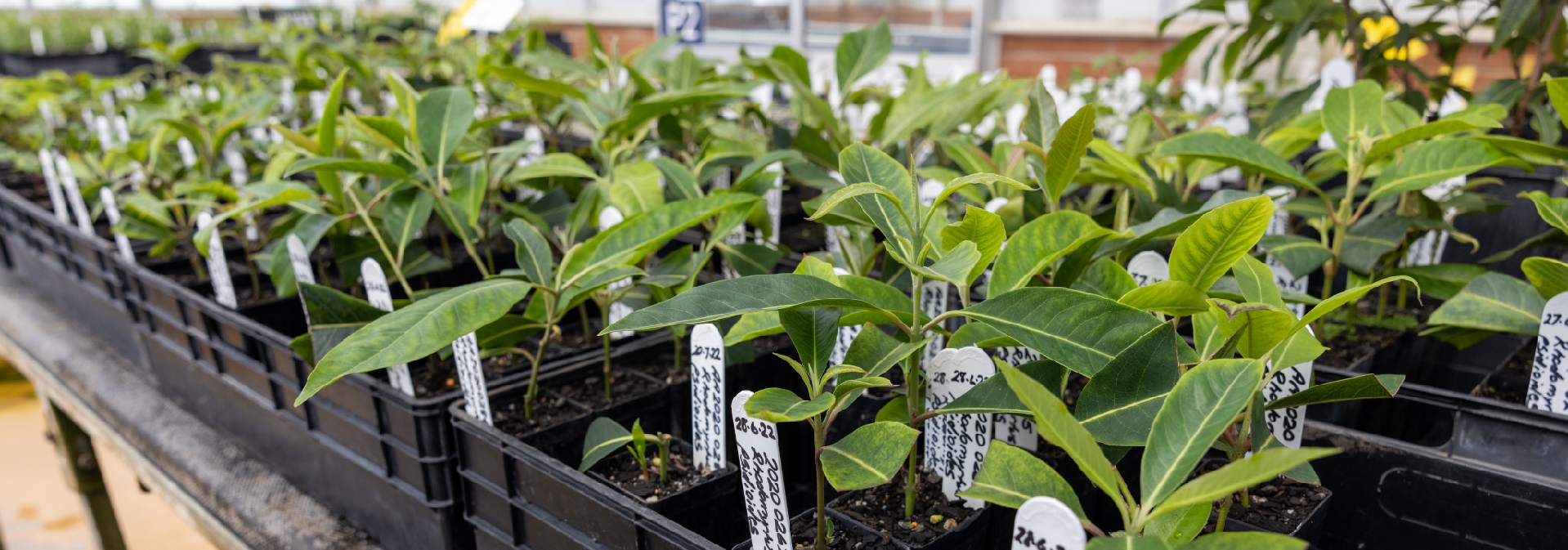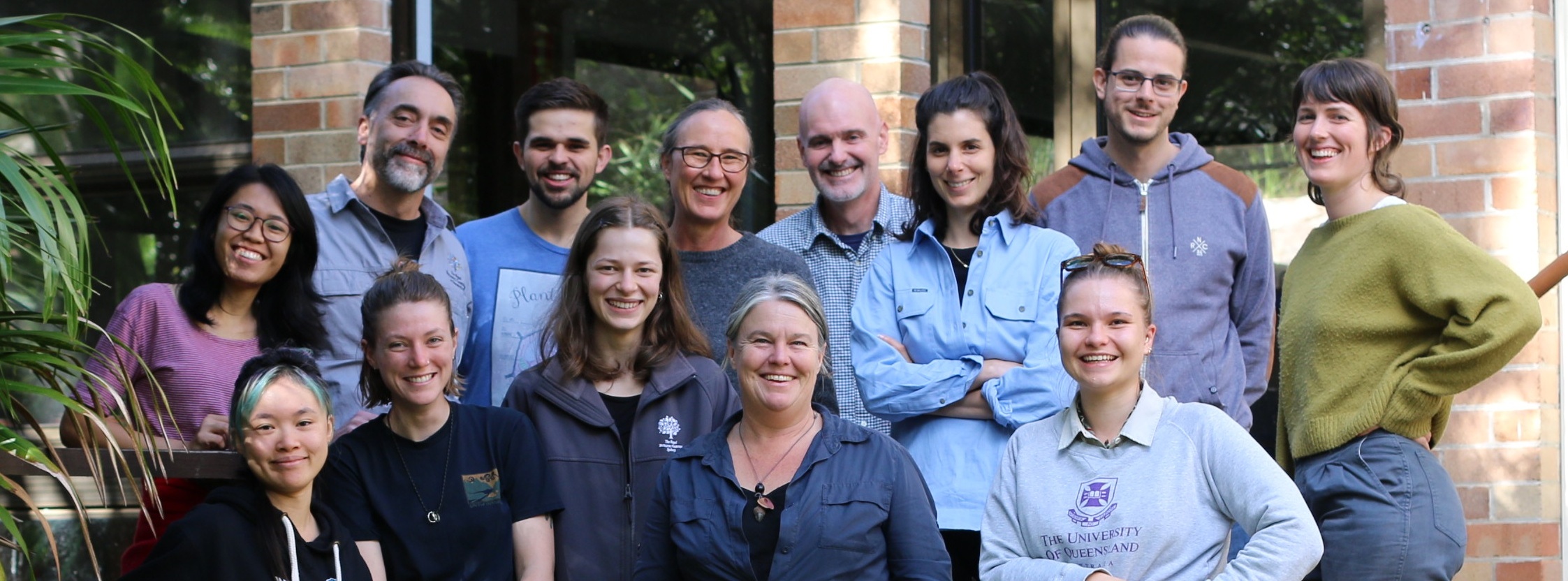The genetics revolution is changing the way we study nature. Millions of years of evolution has taken plant species on a fascinating journey of change and adaptation. A plant’s story is hidden in its DNA, now we have to tools to read that story.
Do plants have DNA (like people and animals)?
Yes. All living things have DNA. And DNA – in a plant, a beetle, or in your thumb – is a long string of four different building blocks. The four building blocks each have a chemical name, but we call them A, C, G and T, for short. The order of the building blocks along a string of DNA encodes hereditary information. In a tree, the DNA code includes a set of instructions that is needed to grow, make roots and leaves and a trunk, and to use energy from the sun to make sugars – all the important things that plants do.
How do you get the DNA out of the plant?
DNA is found within every plant cell. However plant cells are protected by a hard wall, and so the first step in a DNA extraction is to break the cell wall. This is achieved by freezing a small amount (generally less than 1 gram) of leaf material at very low temperatures in liquid nitrogen, and crushing it to a powder with a pestle in a mortar. Freezing also protects the DNA from all other compounds that might damage it during the process. The leaf powder is then placed in a solution containing a detergent-like chemical that removes unwanted substances that are separated from the solution by spinning in a centrifuge. The DNA is finally precipitated in an ethanol solution, and stored in a test tube for long-term keeping.
How do you study the DNA?
Once we get DNA out of a plant we can keep it in a purified form and read the sequence of information it holds. To do this, we determine the sequence of the A, C, G and T building blocks using incredible machines that can read tens of thousands of short strings of DNA at the same time (called high-throughput sequencers).
Once we have coded the DNA sequences from different plants, we can compare them, and learn about the relationships among these plants. The key point here is that DNA sequences from closely related plants – for example, siblings, or two seeds from the same fruit – are usually very similar. But plants that are more distantly related, with no recent shared ancestors, tend to have more differences in their sequences. So for our analyses, by focusing on the bits of sequence that are different (for example one plant has the A building block where another has G) we get an idea of how related they are.
What do the results look like
The results can be thought of as a really big table. Each row in the table is a specific plant. And each column in the table is a particular spot along the DNA sequence where the plants differ. There is an extra complication, though. Like us, most plants have two copies of their DNA, one copy inherited from mum, and another from dad. So for each plant, at each spot in the sequence, the table has two letters, corresponding to the two copies of DNA.
This big table is a very useful way to summarise the results of DNA sequencing. But it does not yet tell us much about how the plants are related to each other. So we use the table to do some calculations about the relatedness of these plants. Common calculations describe how different DNA is, on average, at different places on a map, or what sections of DNA are similar in discrete groups of plants (populations).
What can these results tell us about our plants?
First, imagine a species of plant whose pollen is moved around by a small insect. An insect visits a flower, picks up some pollen, moves a short distance to another flower, where it deposits the pollen and fertilises a seed. The pollen has not moved very far! In this species, plants that are relatively short distances apart might rarely exchange DNA. As a consequence they will be distantly related and their sequences will be quite different.
Now imagine a plant species whose flowers are regularly visited by birds. A bird might visit a flower and fly a long distance before visiting another. As a result DNA can travel long distances, and maintain genetic similarity among plants that are quite far apart. The plants don’t move much but their pollen, and the DNA within it, can!
However, the pollen is only one factor that affects connectivity among plants and populations. Others include different features of the plants (e.g., the dispersal potential of the seeds), and features of the landscape (e.g., rivers can block pollen movement by animals). This is why it is important that we study ‘population genetics’ – it is usually impossible to predict how much the DNA of a plant species will change across a landscape, without measuring it.
How can population genetics results be used?
When ecosystems are restored, there is usually little genetic (DNA) information available to help make choices about the collection of seeds. This means it is hard to predict what amount of genetic diversity is needed in restored plant populations to ensure robustness to environmental change.
Our calculations about the way plant DNA changes across the landscape will inform these choices. For example, when we identify plants for which populations become distantly related even over short distances, a seed collector might need to source seeds from near the location that is being restored. When our calculations identify plants that show little DNA differences across large distances, seed collectors can travel further for seed in order to supplement DNA diversity.
In short, our calculations will empower ecosystem restorers to source material in a way that will maximize the viability and the long-term sustainability of restored populations. More importantly, they will maximise the benefits derived from the all the hard work and ever-diminishing resources available for restoring ecosystems.






